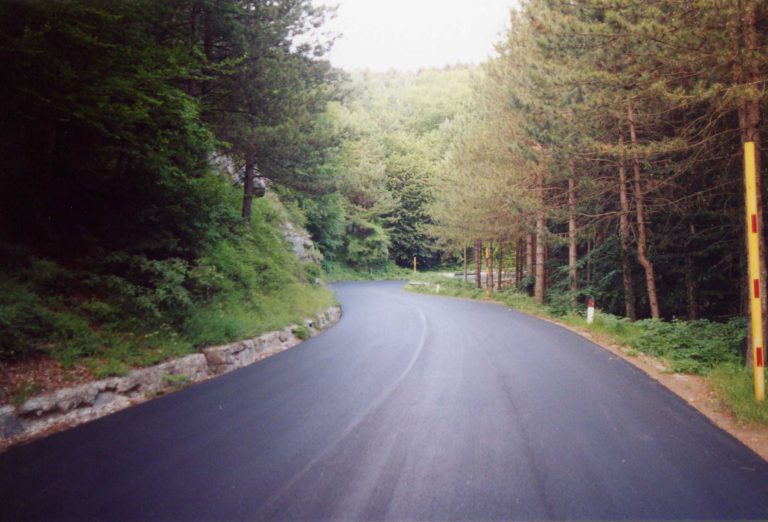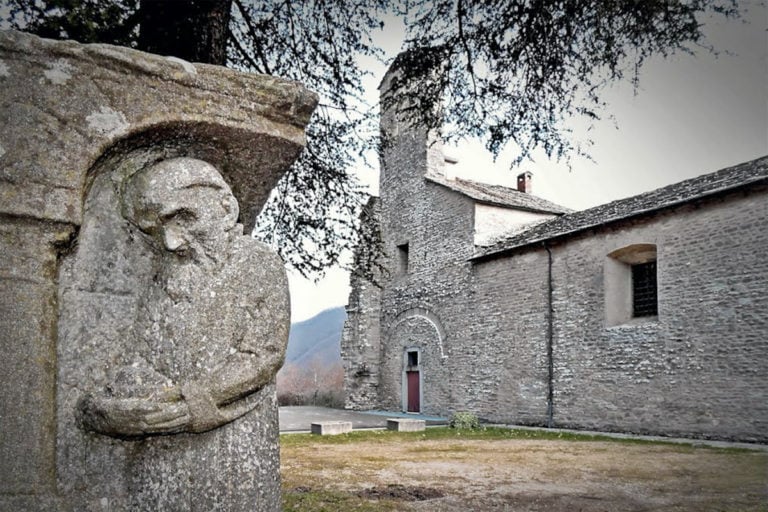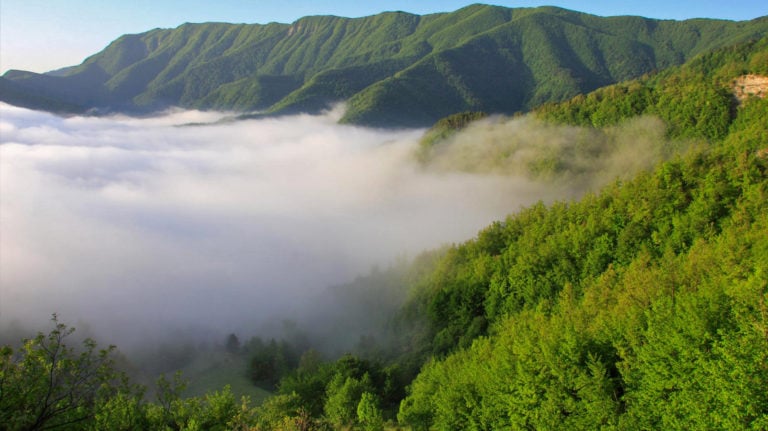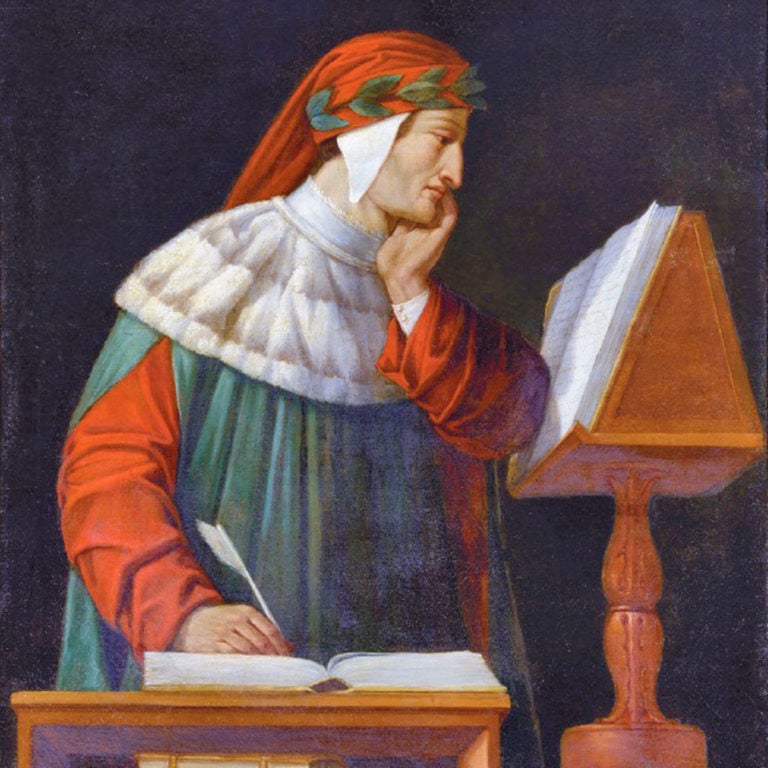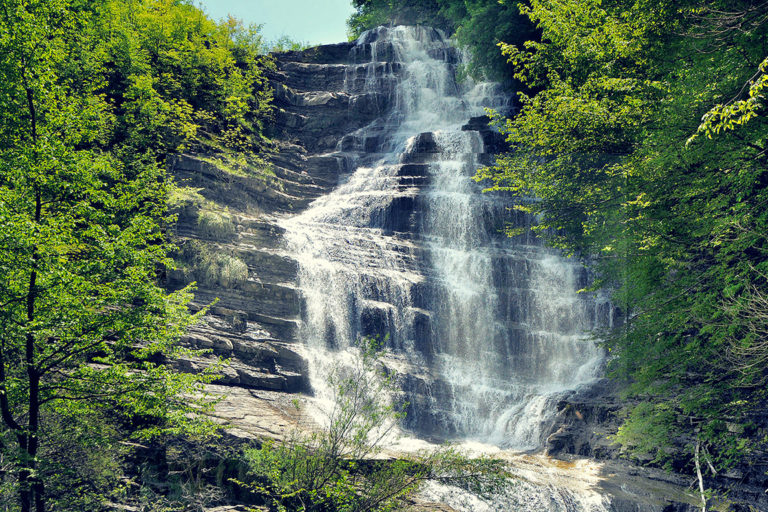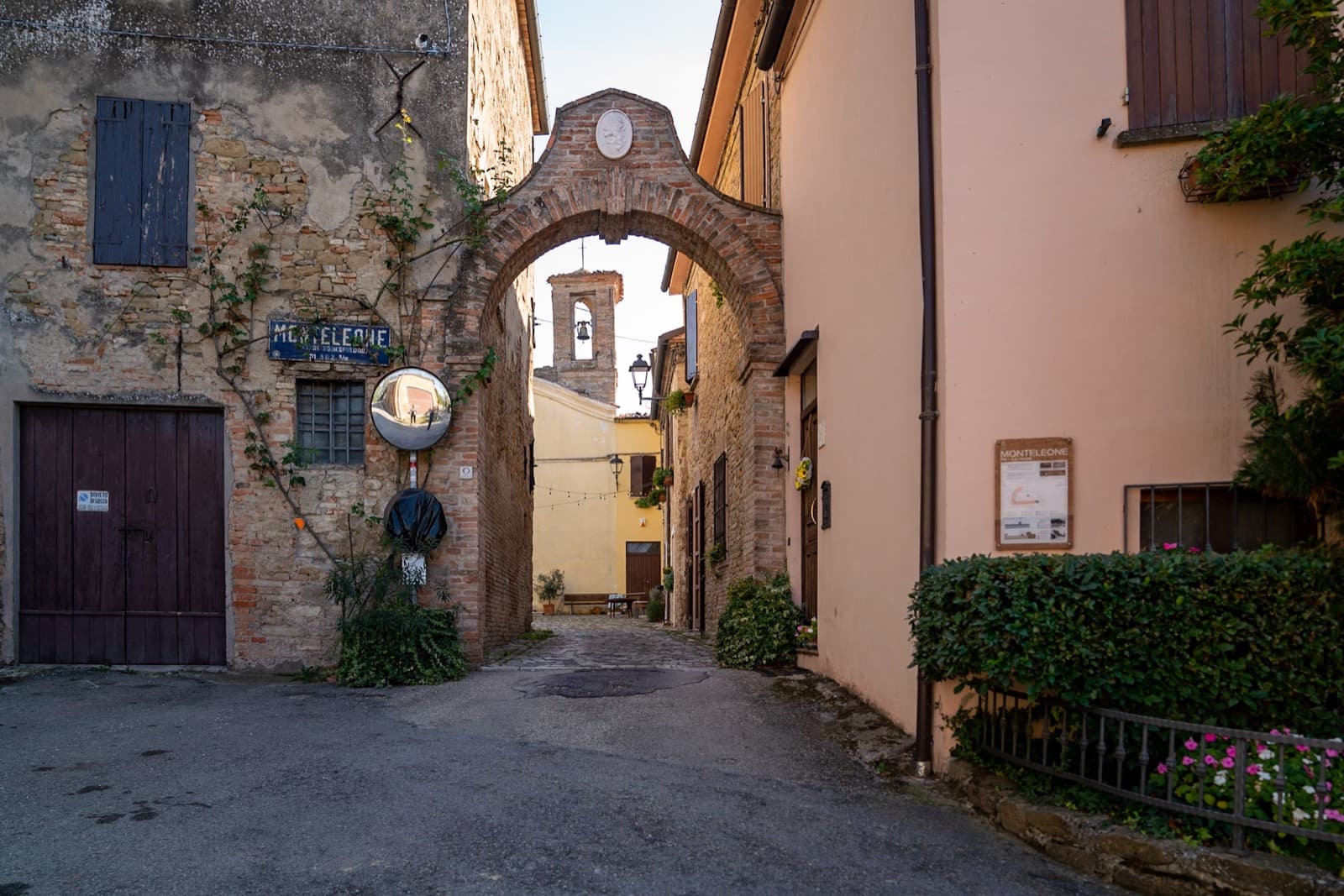Just less than 60 km separate the Muraglione Pass from the city of Forlì. It’s a short distance after all, but the many places dotting the route make it an incredible scenographic journey of art and nature.
In the area rises the valley of the Montone river. It is perhaps one of the most beautiful valleys in Romagna, a popular destination for the two-wheels lovers because of that series of tangle of hairpin bends, which, crossing the Tuscan-Romagnolo Apennines, leads to the famous Muraglione pass (It’s the legendary state road SS 67, also known as Via Artusiana).
The best way to deal with this territory is to visit it all, no quarter: go along the ancient paths of pilgrims, who in the Middle Ages moved in the valley to isolate from the civilized world and immerse themselves in the romantic and spiritual charm of nature.
We will try not to isolate ourselves as the hermits used to do, but we will go in search of all the possible contaminations that this area, historically known as Romagna-Toscana, can give us.
CASTROCARO TERME AND TERRA DEL SOLE, RENAISSANCE AND MIDDLE AGES IN COMPARISON
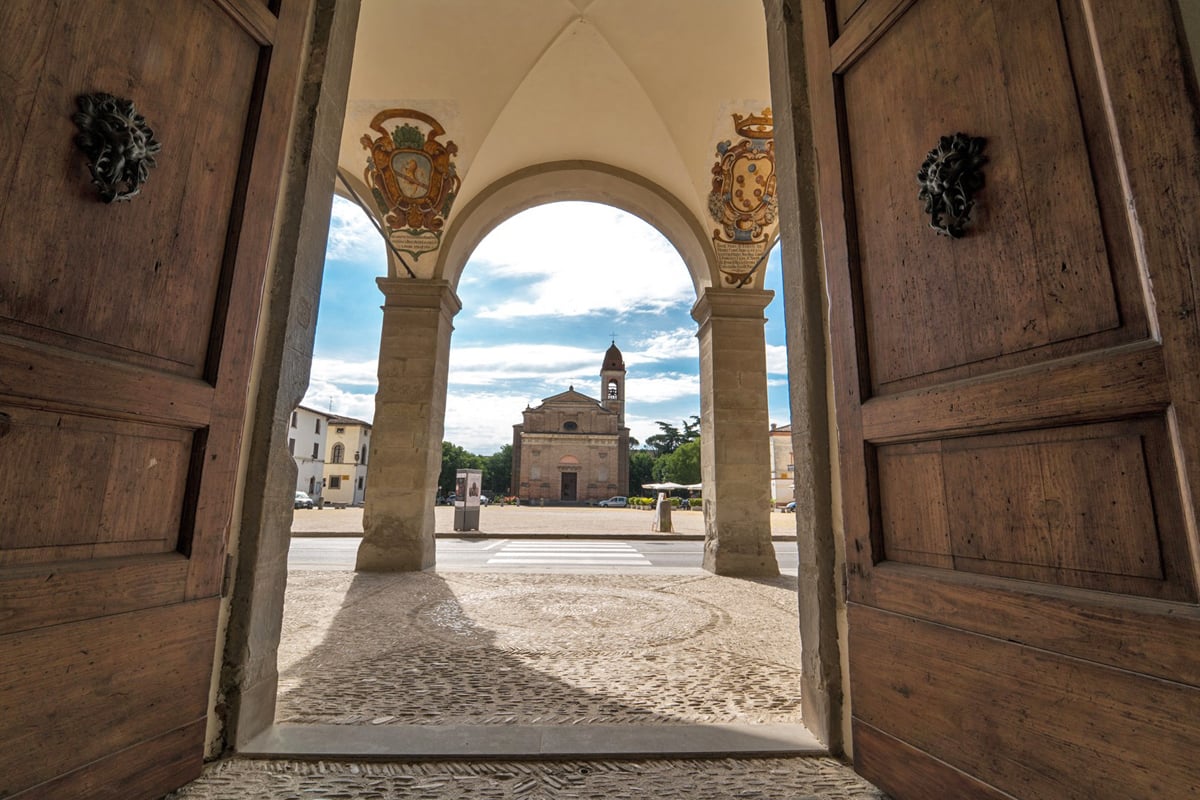
Two ancient villages, that today are one single large municipality, were awarded in 2005 by the Touring Club with the tourist quality mark of the Orange Flag.
On the one side is CASTROCARO, famous for its thermal waters (already known in Roman times) and for the namesake festival dedicated to new talents of Italian music.
In Castrocaro beats a markedly medieval heart: there is the fortress, the city walls and a series of impressive testimonies, wrapped in a hilly landscape of vineyards and fruit trees.
On the other hand, however, is TERRA DEL SOLE, the emblem par excellence of the noble power of the Renaissance period. A real “fortress city” built in the time of Cosimo I De’ Medici, linked to order and proportion.
DOVADOLA, GUARDIAN OF THE MONTONE RIVER
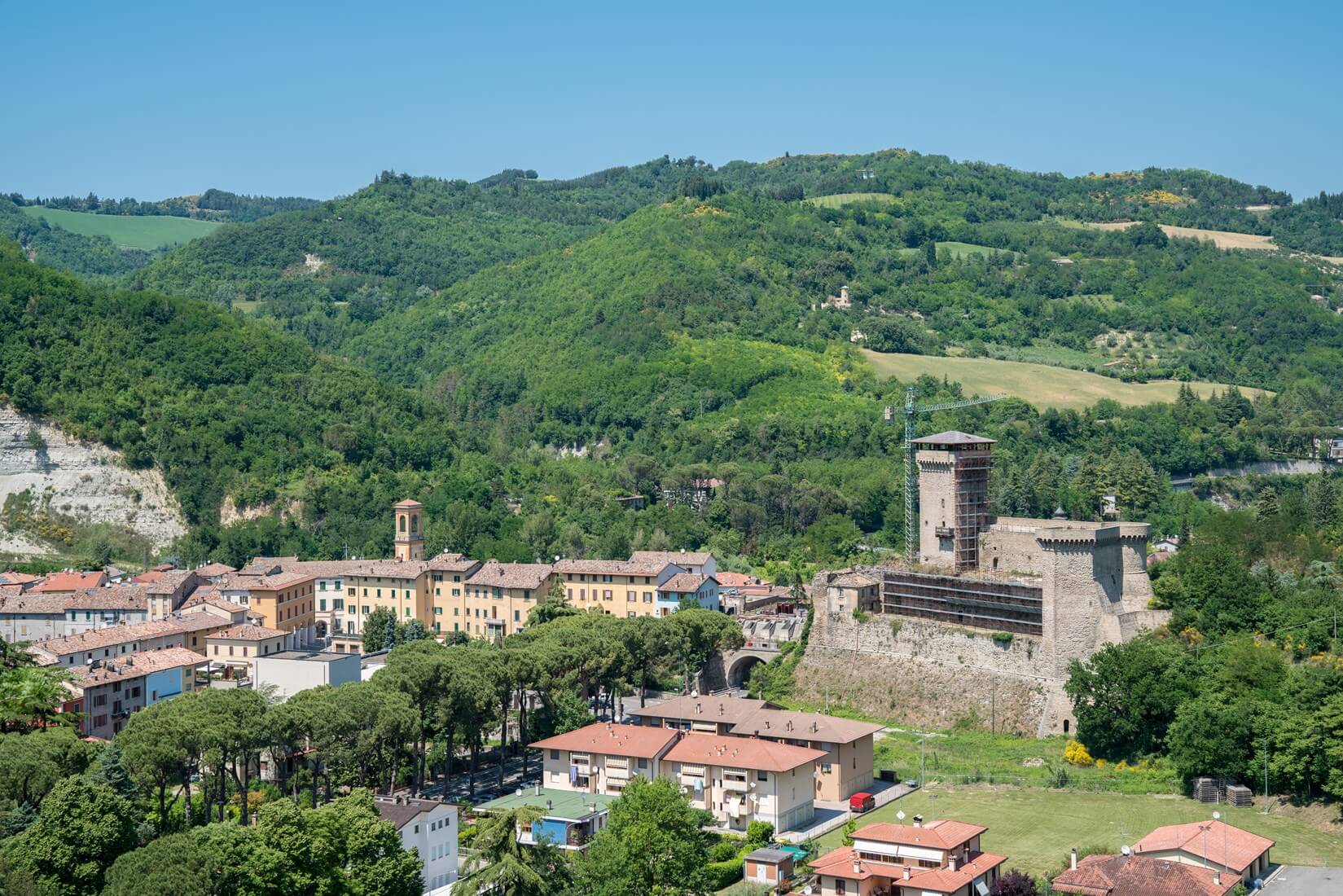
Leaving Castrocaro behind, after just 10 km, you reach the medieval town of DOVADOLA.
Surrounded by the greenery of the Montone river valley, the village is truly delightful, with an almost perfectly preserved urban structure.
Before being conquered by Florence in 1424, Dovadola had been under the Counts Guidi’s control, whose fortress, commonly called the “Roccaccia”, guards the entrance to the town, as if it were overseeing the river.
Walking through its streets is a real pleasure. You can come across picturesque views but also visit ancient buildings such as the silent Romanesque Abbey of Sant’Andrea.
Absolutely not to be missed is the Hermitage of Montepaolo, just outside Dovadola. It is a place of prayer dedicated to Saint Anthony of Padua, located along the namesake path, which is also a starting point for the Way to Assisi.
ROCCA SAN CASCIANO AND ITS TRIANGULAR PIAZZA
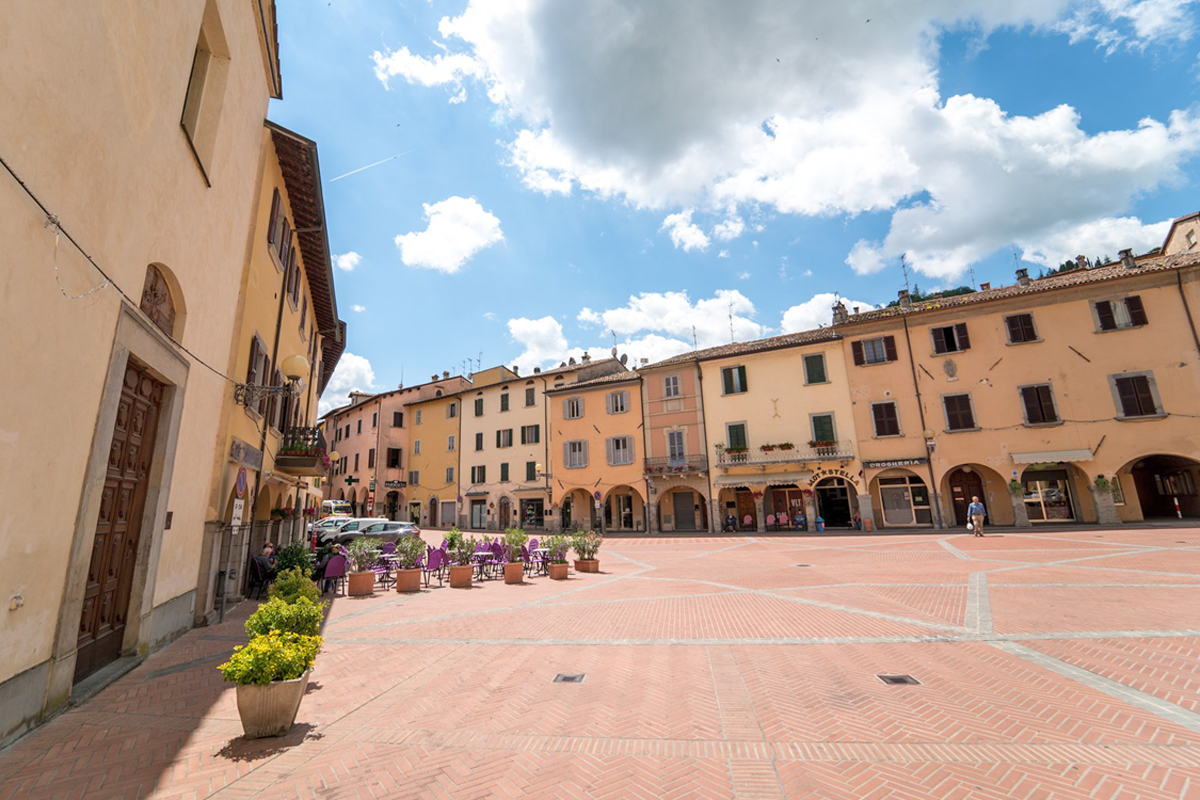
Surrounded by characteristic arcades, and by sixteenth-seventeenth-century palaces and taverns, it has been a place for markets and fairs for centuries, especially between the 1700s and the 1800s when it was the seat of the silk market.
Divided for centuries between the Florentine Republic and the lords of Romagna, the pulsating soul of ROCCA SAN CASCIANO is in its main square dedicated to Giuseppe Garibaldi, and it is nicely nicknamed “a baccalà” (“codfish”) due to its triangular shape.
Circular paths better known as the “Percorsi della Margherita”, depart from Rocca San Casciano. Climbing up the hills, from these paths the view of the harmonious valley of the Montone river is enchanting.
Not to be missed, just 4 km from the town, is the San Donnino Abbey, one of the oldest abbeys in all of Romagna-Tuscany.
BETWEEN MONKS AND WATERFALLS, THE VILLAGE OF PORTICO DI ROMAGNA AND SAN BENEDETTO IN ALPE
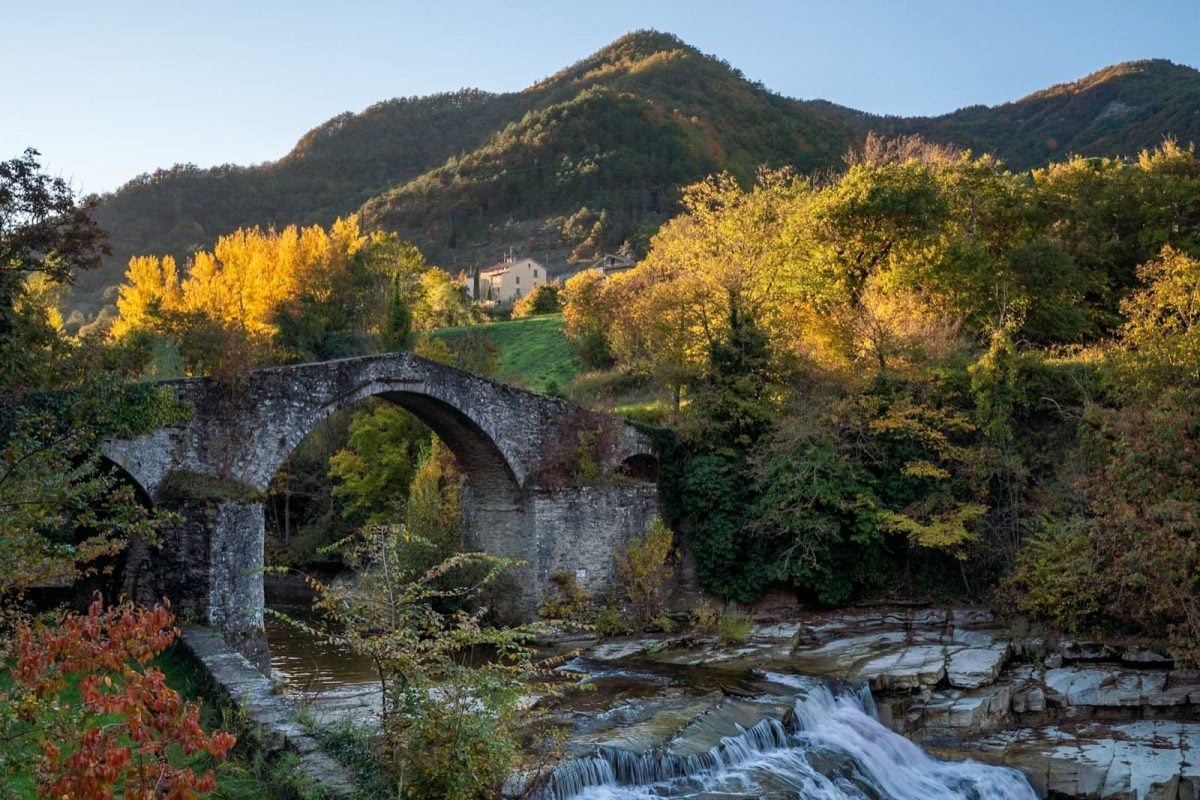
The last villages before the Muraglione Pass are PORTICO DI ROMAGNA and SAN BENEDETTO IN ALPE, also winners of the Orange Flag of the Touring Club.
We are in the Foreste Casentinesi, Monte Falterona, Campigna National Park, surrounded by an unparalleled naturalistic context.
The branches of the centuries-old trees hide great trasures: the clear waterfalls of Acquacheta, mentioned by Dante Alighieri in the XVI Canto of Inferno, the Brusia Waterfalls (in the village of Bocconi) with the typical “humpback” bridge dating back to the eighteenth century, and the ghost village of Bastia, swallowed by the green of nature.
Portico is a true gem. The medieval layout, distributed on three floors, has almost remained the same. There is the castle, the parish church, the manor houses and the people’s houses at the bottom of the valley.
As for the other villages in the valley, also this area’s history is tightly linked to the family of Counts Guidi. Legend has it that in Palazzo Portinari the Father of Italian Literature, Dante Alighieri met his beloved Beatrice, whose family was originally from these areas.
A few kilometers further on and you reach San Benedetto in Alpe, known in the history books for the Abbey of San Benedetto, one of the oldest in the whole Apennines from which the same town took its name.
In the end… you reach a gem. Halfway between Rocca San Casciano and Portico, in the direction of the municipality of Tredozio, stands Monte Busca (740 m a.s.l.).
Along its slopes is the smallest volcano in Italy, or at least many believe it: it is actually a source of methane that constantly erupts from the subsoil, as if it were a small breath of gas.
PREMILCUORE, THE SCREAMING OF ROMAGNA
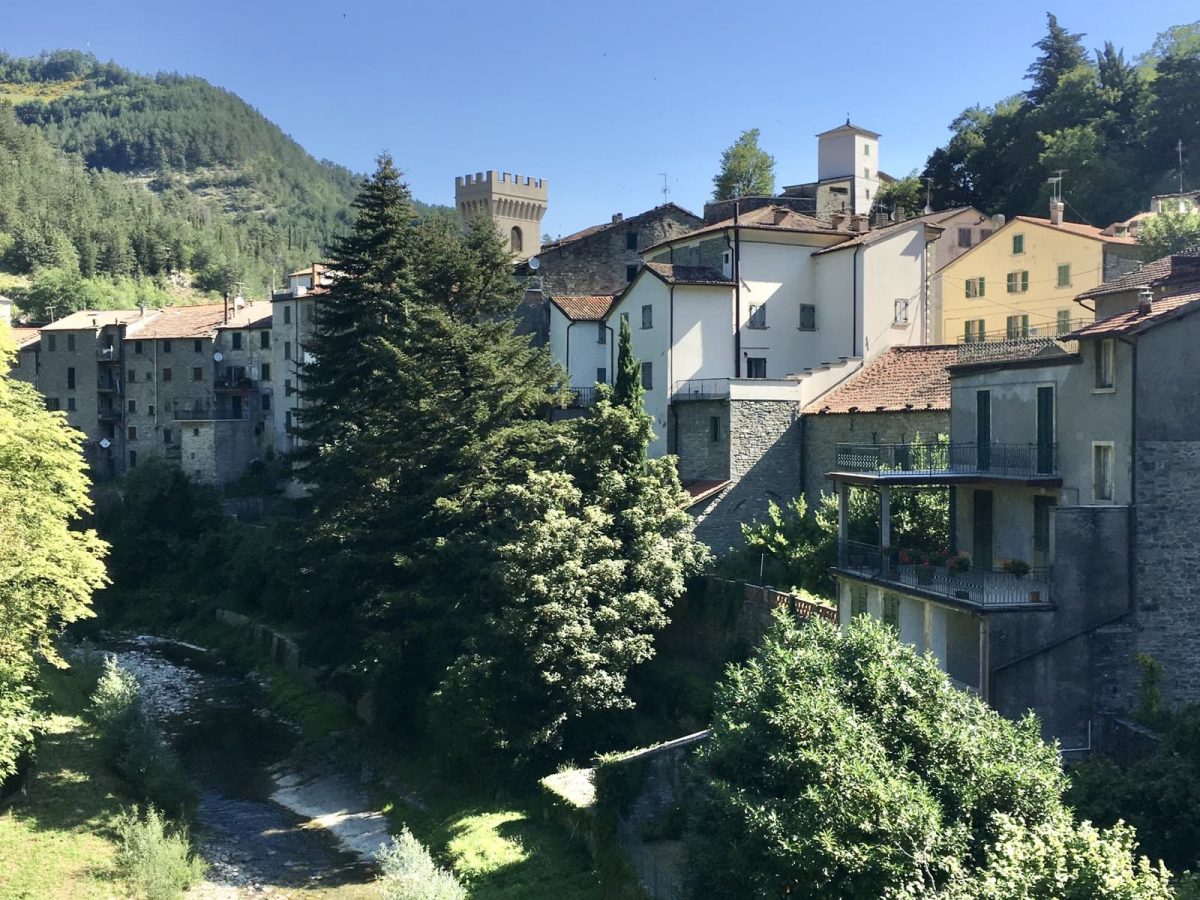
Before crossing the border and arriving in Tuscany, there is one last village to visit on the edge of the Casentinesi Forests National Park, in the valley of the Rabbi river.
It is PREMILCUORE, considered by many to be one of the most enchanting places in the Tuscan-Romagnolo Apennines.
Orange Flag of Touring, the citadel of Premilcuore has medieval origins. Here, time has failed in its intent. The historic centre is almost untouched, featuring picturesque towers, clinging houses and buildings with a noble past.
The surrounding area is very suggestive and the views to enjoy are many: the Rabbi river with its natural pools, the Sega Waterfall and the Grotta Urlante, where the only sound is the roar of the water that rushes impetuously down the cliffs.
Finally, there are the mills. Premilcuore is namely a land of ancient mills, all located along the river.
Before leaving, then, don’t forget to pay a visit to the Mengozzi mill in Fiumicello and the Biondi mill in Castel dell’Alpe: old testimonies of a very fascinating present!
Author

Davide Marino
Davide Marino was born archaeologist but ended up doing other things. Rational – but not methodic, slow – but passionate. A young enthusiast with grey hair
You may also like
From Emilia-Romagna to Tuscany on two wheels: the Muraglione pass
by Arturo Castellini /// October 3, 2017
Breathtaking landscapes in Romagna… and where to find them
by Davide Marino /// August 6, 2018

Interested in our newsletter?
Every first of the month, an email (in Italian) with selected contents and upcoming events.
5 hikes to discover the Casentinesi Forests on foot
by Elisa Mazzini /// October 19, 2020

